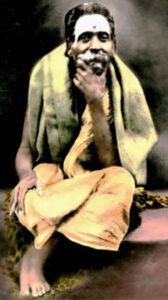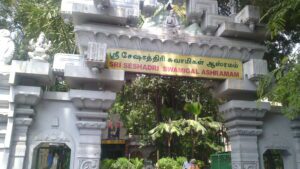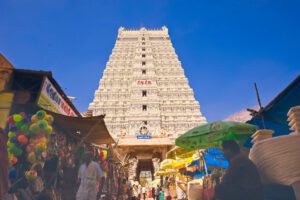Exploring the Mystical World of Seshadri Swamigal Ashram: A Spiritual Journey Like No Other
Seshadri Swamigal Ashram – The mystical world of Seshadri Swamigal Ashram is located in the serene town of Tiruvannamalai, Tamil Nadu. The ashram is named after one of the most revered saints of South India, Shri Seshadri Swamigal. Visiting the ashram is a journey that will leave you transformed both spiritually and mentally.
 The Seshadri Swamigal Ashram is surrounded by the majestic Arunachala hills and is home to a plethora of greenery, birds, and animals. Seshadri Swamigal Ashram is a place of complete relaxation and rejuvenation – a place where you can leave behind the worries of your mundane life and immerse yourself in spiritual practices that have been practiced for centuries.
The Seshadri Swamigal Ashram is surrounded by the majestic Arunachala hills and is home to a plethora of greenery, birds, and animals. Seshadri Swamigal Ashram is a place of complete relaxation and rejuvenation – a place where you can leave behind the worries of your mundane life and immerse yourself in spiritual practices that have been practiced for centuries.
At the ashram, you will encounter a vast array of people from all walks of life. Some come from different countries and cultures, seeking a deeper meaning in their lives. Others are locals who visit the ashram regularly, seeking solace and guidance. It is a place where you will feel welcomed and accepted, no matter who you are.
The Seshadri Swamigal Ashram offers a range of spiritual practices, including chanting, meditation, and yoga. The daily routine starts at 5 am with group chanting and meditation, followed by yoga practice. The rest of the day is spent in silence, meditation, and self-reflection. In the evening, there is another group chanting session, followed by dinner.
 One of the most unique aspects of Seshadri Swamigal Ashram is the opportunity to participate in Naam Japa, which is the chanting of the divine name. The ashram holds continuous Naam Japa every day, and visitors are welcome to join in at any time. Naam Japa is a powerful spiritual practice that purifies the mind, clears negative energy, and helps you connect with the divine.
One of the most unique aspects of Seshadri Swamigal Ashram is the opportunity to participate in Naam Japa, which is the chanting of the divine name. The ashram holds continuous Naam Japa every day, and visitors are welcome to join in at any time. Naam Japa is a powerful spiritual practice that purifies the mind, clears negative energy, and helps you connect with the divine.
Another unique feature of the ashram is the presence of the mahamandapam, which is a sacred space created for the worship of the divine. The mahamandapam is an architectural marvel, known for its intricate carvings and beautiful paintings. It is a place of deep reverence and devotion.
Visiting the Seshadri Swamigal Ashram is not just a physical journey; it is a spiritual journey that takes you deeper into the mysteries of the universe. It is an opportunity to awaken your inner self and connect with the higher consciousness. It is a journey like no other, filled with love, compassion, and divine grace.
Seshadri Swamigal Ashram is a place of immense spiritual significance that has been a source of inspiration and guidance for generations. It is a place that welcomes everyone with open arms, regardless of their background or beliefs. A visit to the ashram is an opportunity to connect with your inner self, find inner peace, and experience the mystical world that lies within all of us.

 The Girivalam Temple walk is a circumambulation of the sacred Arunachala Hill, which has great spiritual significance in Hinduism. The walk is approximately 14 km long and takes around 4-5 hours to complete. The path is well-paved and surrounded by lush greenery, making it not just a spiritual journey but a physical one as well.
The Girivalam Temple walk is a circumambulation of the sacred Arunachala Hill, which has great spiritual significance in Hinduism. The walk is approximately 14 km long and takes around 4-5 hours to complete. The path is well-paved and surrounded by lush greenery, making it not just a spiritual journey but a physical one as well. The temple is devoted to Lord Shiva and is surrounded by acres of beautifully landscaped gardens. The architecture of the temple is awe-inspiring as it features intricate carvings and sculptures that are a testimony to the craftsmanship of ancient Indian artisans. The temple complex has numerous shrines, mandapams, and ponds, which are spread across the sprawling campus.
The temple is devoted to Lord Shiva and is surrounded by acres of beautifully landscaped gardens. The architecture of the temple is awe-inspiring as it features intricate carvings and sculptures that are a testimony to the craftsmanship of ancient Indian artisans. The temple complex has numerous shrines, mandapams, and ponds, which are spread across the sprawling campus.